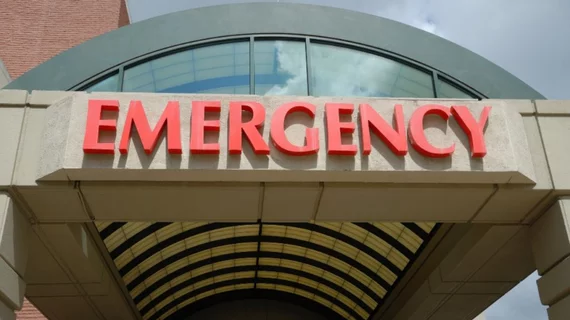Delaying kidney-function testing prior to contrast-enhanced CT dramatically improves imaging throughput
Delaying kidney-function testing prior to contrast-enhanced CT in the emergency department can dramatically improve imaging throughput, according to new research published Nov. 5.
Providers performed about 9.39 million such scan across U.S. EDs in 2019, representing 6.2% of all encounters. Patients typically undergo lab testing to assess renal function and risk before receiving IV iodinated contrast. However, recent practice guidelines assert that the danger of contrast-induced injury is low among certain individuals with adequately functioning kidneys, researchers detailed in the Journal of the American College of Radiology.
Scientists sought to put this advice into clinical practice, inserting a new question into CT order screens in the electronic health record. This allowed referrers to defer lab testing in those with no known chronic kidney disease or risk factors for acute injury. Results have proven positive across four EDs piloting the practice change. After full implementation, the median order-to-imaging-protocol time fell by 46%, from 23.93 minutes down to 13.02. Meanwhile, the median time between an order to beginning the exam dropped nearly 5%, down to 76.48 minutes.
“The intervention is easily replicable and scalable, and therefore may serve as a foundation for other institutions to implement a similar process change,” Gowthaman Gunabushanam, MD, with the Yale University School of Medicine, and co-authors wrote Sunday.
The quality improvement project spanned three phases: baseline, pilot (optional EHR order question) and full implementation (required order question). All told, the study included 16,446 contrast-enhanced CT studies from the four participating emergency departments. Ordering-provider engagement rates with the question remained low during the pilot phase (5% to 14%), but investigators saw improvement in subsequent steps. Gunabushanam et al. found very low risk (0.3%) of patients having unsuspected severe renal impairment (defined as a glomerular filtration rate under 30 mL/min/1.73m2) after an ED provider deemed them as low risk without lab testing.
“This suggests that the process can be safely implemented as well,” according to the study.
Improvements in order-to-begin times varied depending on the type of emergency department, the authors reported. Greater benefits were found in freestanding and non-trauma-center hospital EDs versus a busier tertiary care center department located in a hospital.
“We suspect this lack of improvement in this particular ED is at least partly due to this ED being the busiest in our health system, often working well above capacity at baseline,” Gunabushanam and co-authors advised.
Read much more in JACR at the link below.

